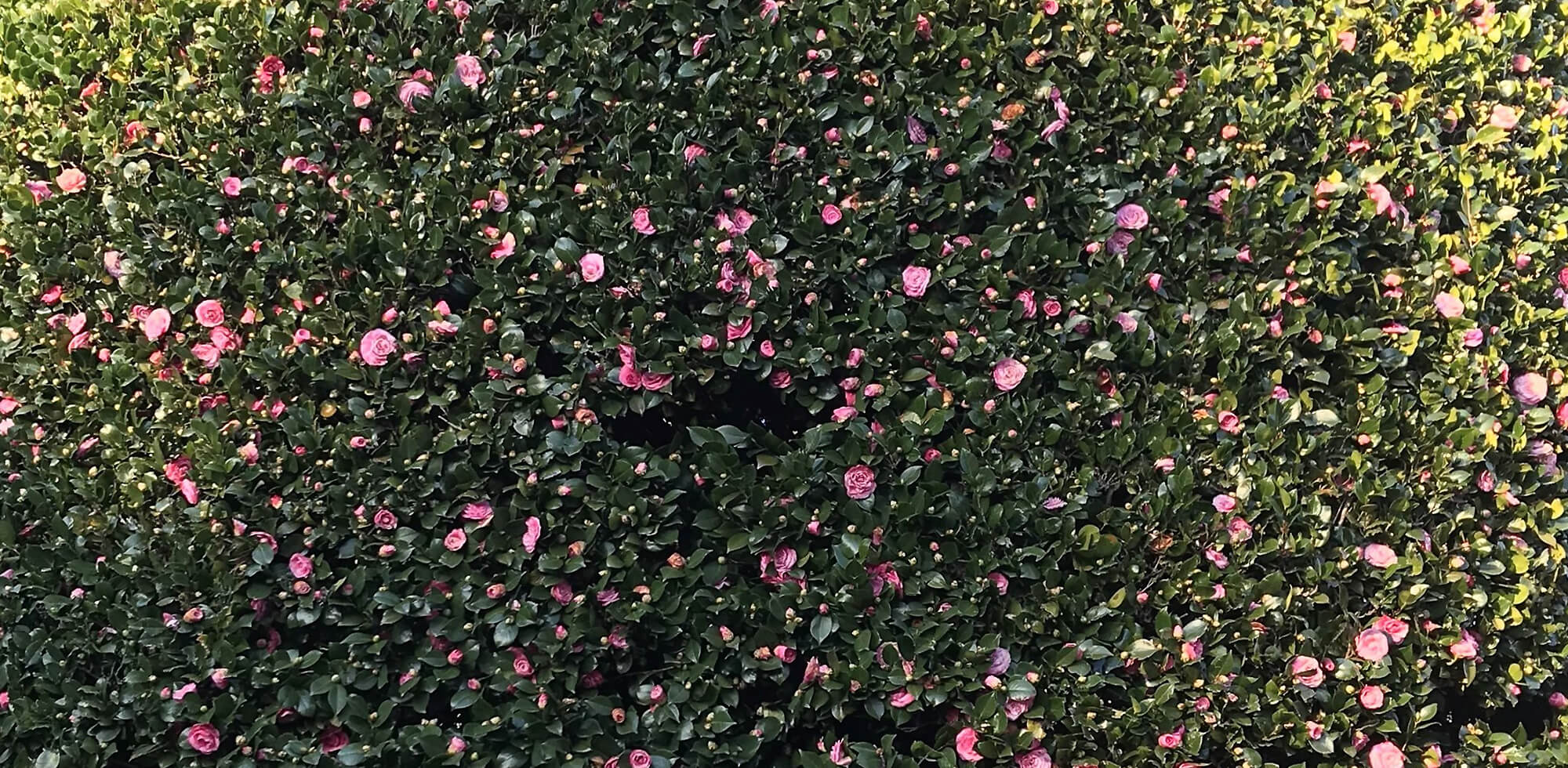
Here you will find interesting facts about camellias from M - R.
P like pH value
Camellias require slightly acidic soil with a pH of around 5.0 to 6.0.
The pH value is responsible for the nutrient absorption of plants. That is why it is important for camellias that the substrate is not alkaline. Unfortunately, this can also be caused by watering with hard water. For plants that do not have lush green leaves despite regular fertilization, you can check the pH value of the soil to be on the safe side. There are easy-to-use soil tests available commercially. If the pH value is alkaline, soil improvers for ericaceous plants, e.g. B. from Substral, very helpful.
P is for planting and care tips
Which location is the right one?
Camellias are sociable plants and don't like to be alone. In groups or together with other plants, they prefer a protected, partially shaded / partially sunny place under taller trees, in front of hedges or near a house wall.
It is important to protect camellias from strong winds and hot midday sun. Protection from the morning sun in winter plays a role in areas where there are long periods of frost from minus 10° degrees. Then the plant and its root ball freeze completely. When the leaves thaw later in the morning sun, the moisture in the leaves quickly evaporates. The plant wants to draw moisture from the root area, which is still frozen, and then dries up.
However, it can be sunnier, especially in summer, as the camellias form their flower buds in the vegetation phase, which begins after the flowering period. A regular water supply is very important during this time. If the root ball dries out during this time, the bud base may be lost.
Which soil - how to water?
Camellias not only love partially shaded / partially sunny places, but also slightly acidic, humus-rich and always moist soil. Rhododendron soil or white peat are ideal for planting. Mix in about a third of your own garden soil. Camellias can root to a depth of 3 meters in nutrient-rich loess soils, but are generally shallow-rooted in humus-rich soils and should therefore not be planted too deep. The height of the plant container in which they are delivered provides a good guide for the planting depth. If the soil is very clayey, you should also use expanded clay or pebbles as a drainage layer to prevent waterlogging. We also offer a drainage cushion for keeping the pot in the pot. Lime-free water is ideal for regular irrigation. The root ball must not dry out, but the camellia does not like waterlogging.
When is it planted?
Camellias are best planted from April/May to the end of July. In mild areas (e.g. wine-growing climate), planting in early autumn is also possible; if the soil is still warm after the summer, the plants root very well. After the flowering period, new growth and thus also the vegetation phase begin. Now the camellia has enough time to form roots in the new planting location and is well prepared for the winter later. Regular watering is very important during this time. During hot summer days, you can also lightly mist the entire plant in the early morning or evening to increase humidity.
If you buy a flowering camellia in winter, you can temporarily put it in the ground in a pot. Here too, the root area must be well covered with mulch and brushwood. The camellia always feels more comfortable outside in the wet, cold and humid weather than inside and, since it is in the resting phase, it does not form new roots anyway. This only happens after flowering in the vegetation phase.
If the temperatures get very low, you can quickly pull the plant out of the ground in the pot with one hand and store it in the cool cellar or garage during the frosty period. She doesn't need light at this time. The main thing is that it is cool. In spring the camellia is then taken out of the pot and planted in the ground. Now it can take root well.
Pot keeping
When planting in a pot, you have to pay even more attention to ensuring that the soil in the pot is always moist, but not wet. Be careful of waterlogging, which can cause the fine roots to die. Drainage made of pumice or small pebbles protects here. Please only use a pot or pot that is a maximum of 2 sizes larger than the plant pot in which the camellia is delivered. Make sure there are several drainage holes in the bottom of the pot. Use our camellia soil or mix 1/3 good potting soil, which should contain lava particles for example, with 2/3 Rhodohum to create a substrate that is not too permeable. This way the moisture is stored better.
Pots or buckets can be placed in different places as often as you like; During the flowering period, prominently in the entrance area to admire the magnificent flowers, and in summer perhaps also on the partially shaded balcony.
It is a common old wives' tale that camellias drop their flowers when you move the pot. They need cool temperatures between 0°C and 10°C to open their flower buds. If it is warmer, the buds fall off. That's why it can't be emphasized often enough that camellias are not houseplants.
Care in winter
In winter the camellias need proper winter protection.
In the garden, a thick mulch layer approximately 20 cm high made of soil, brushwood or leaves (preferably the nutrient-rich leaves of the hornbeam) and pine bark (approx. 2 -3 cm) protects the root area. Under no circumstances should you use coarse bark mulch, which is often a carrier of bacteria. Fir or spruce branches can be used well as sun protection to protect the leaves from the winter sun. Under no circumstances should you use plastic foil.
For camellias that are planted in a pot, the best way to protect the root ball is to wrap the pot with coconut or sheep's wool felt mats . When temperatures are low below zero, you should temporarily place camellias in buckets or pots in the cold stairwell or in the garage. A cool cellar can also be used temporarily.
Some customers also successfully use plant heating cables that are wrapped around the pot or placed in the ground around the rootstock. A physicist who accurately calculated the power consumption assured me that it was very low.
In winter the camellias are in their dormant phase and require much less water than in summer. Nevertheless, you shouldn't forget to water: most camellias dry out more often in winter than freeze.

